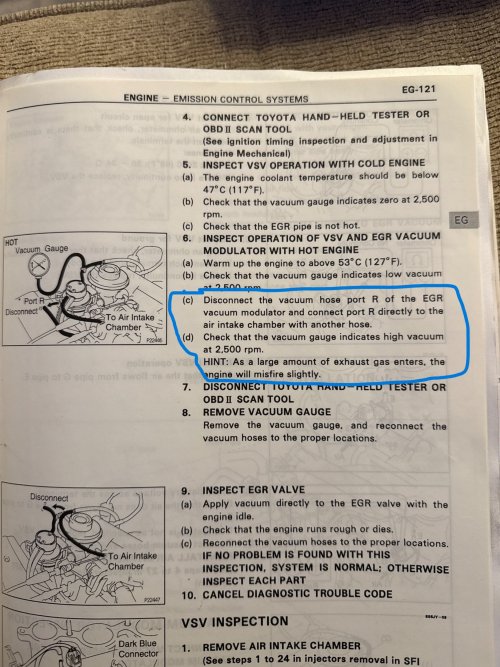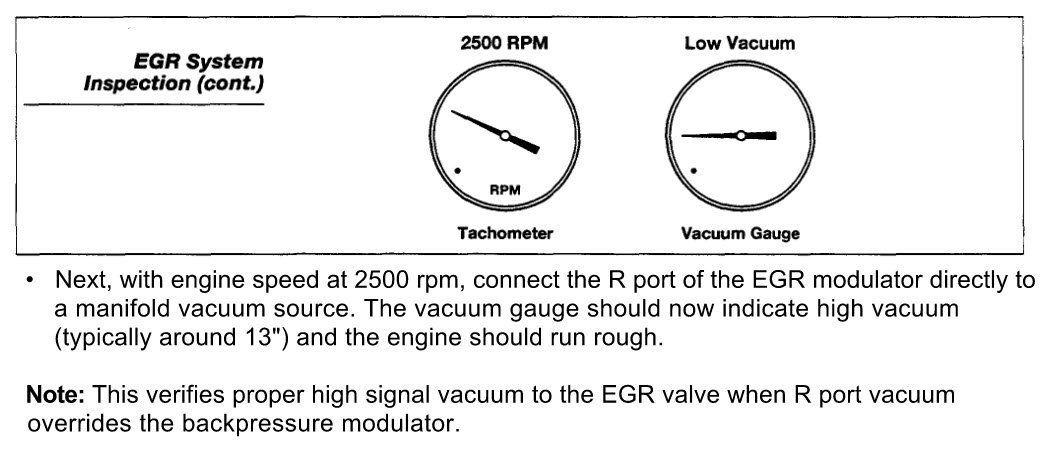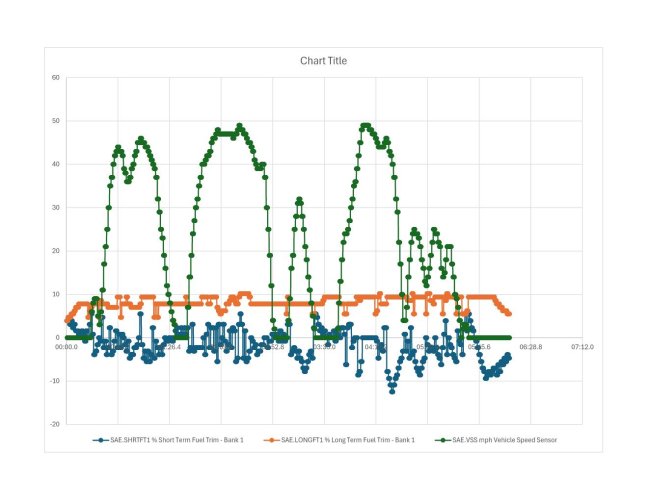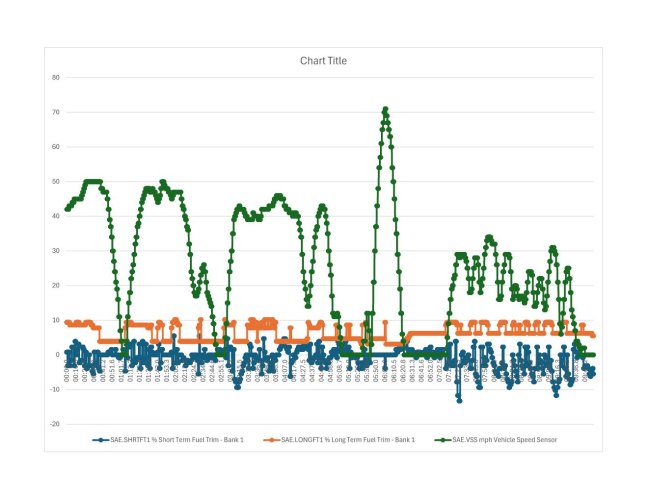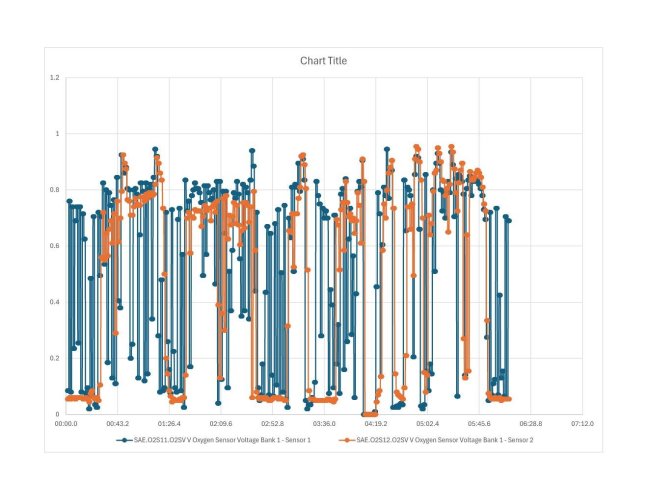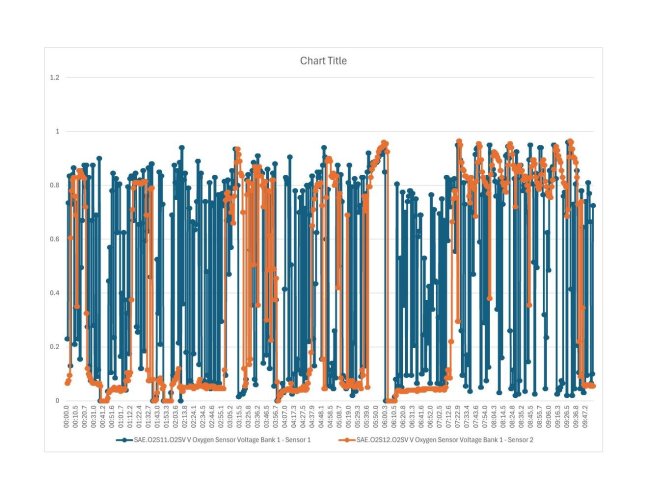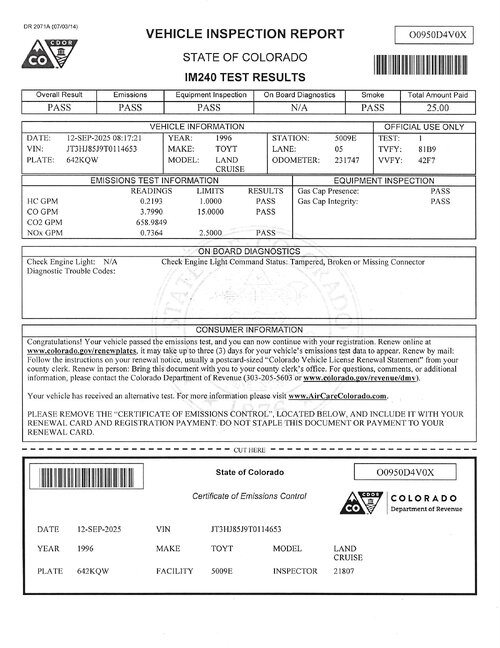I’ve been driving around with a vacuum gauge on the top of the EGR for a couple days. It seems max EGR is during cruising at light loads, like slightly down hill. I’ve seen down to 9 inches vacuum in that scenario. If you let off the throttle just a touch more to fully close the throttle, EGR VSV cuts it off and vacuum goes to 0. EGR VSV also doesn’t allow EGR when accelerating. 0 vacuum until you’ve reached cruising speed and start letting off the throttle. That’s when EGR pumps a little bit, as little as an inch or two and then maxing out per above. So if you’re on the gas and then off the gas back and forth you won’t see EGR.
Interesting as I would have thought EGR would engage during acceleration when the engine is making heat, thus in my mind high NOx. But the fueling system must manage it to be rich enough during acceleration to not have high NOx. It aligns with the graph; don’t see NOx spikes until after a period of acceleration when the throttle is let up.
Interesting as I would have thought EGR would engage during acceleration when the engine is making heat, thus in my mind high NOx. But the fueling system must manage it to be rich enough during acceleration to not have high NOx. It aligns with the graph; don’t see NOx spikes until after a period of acceleration when the throttle is let up.


